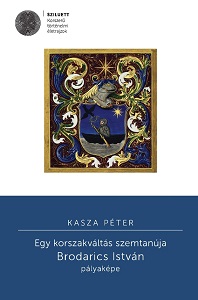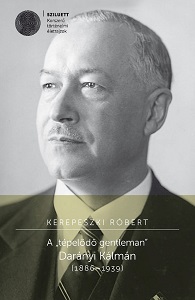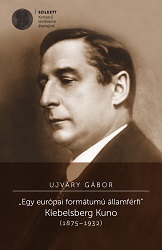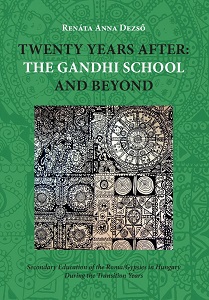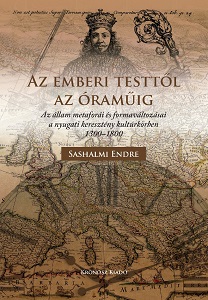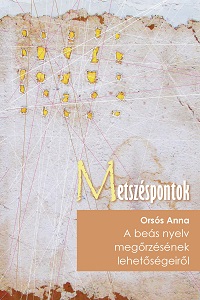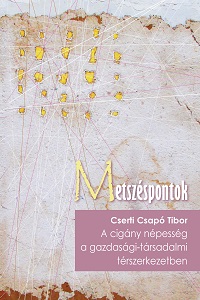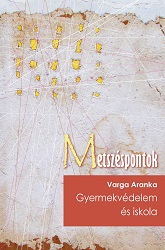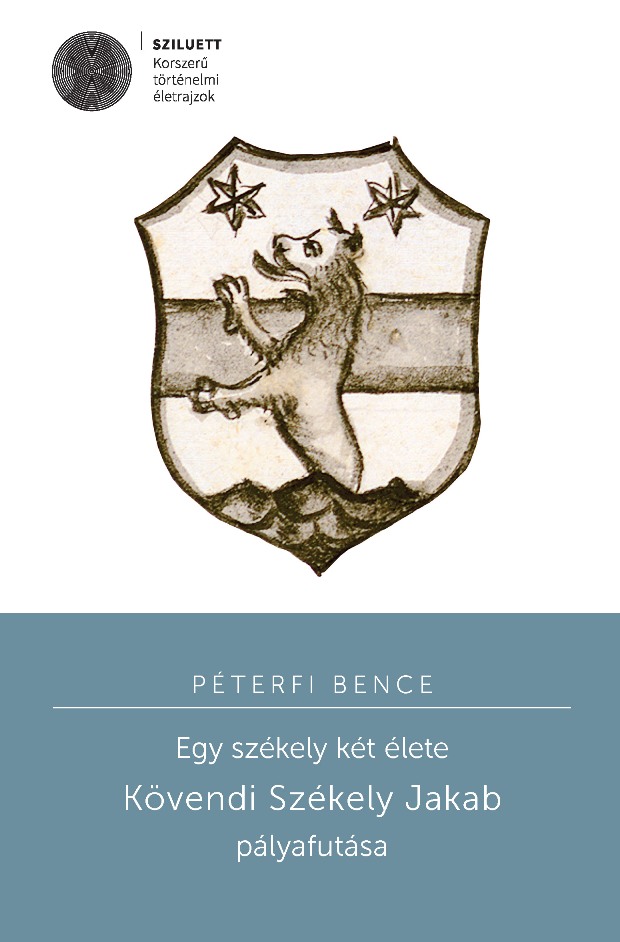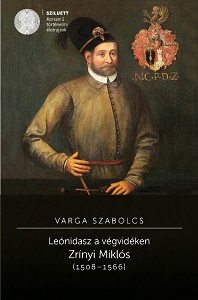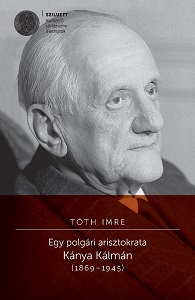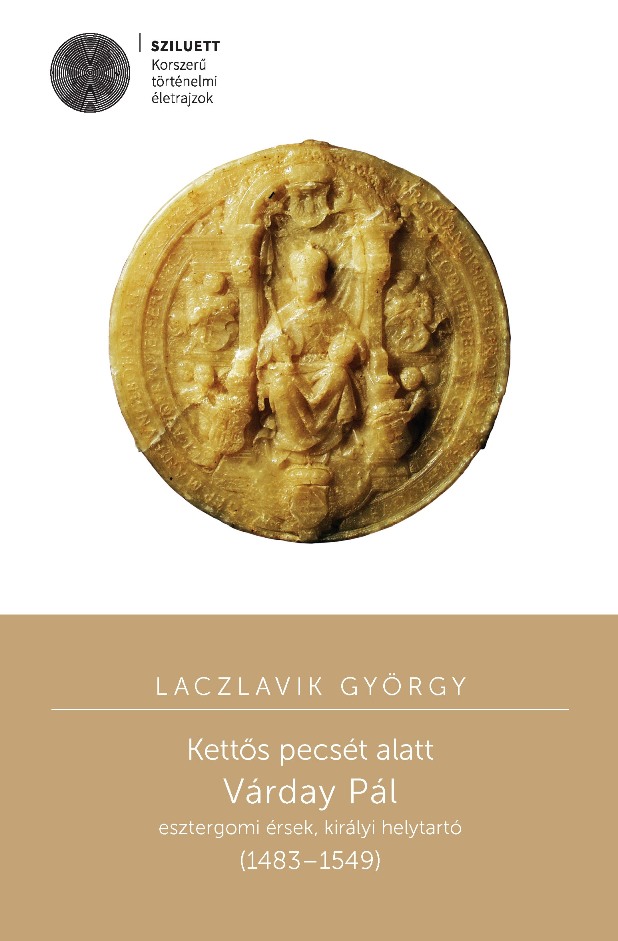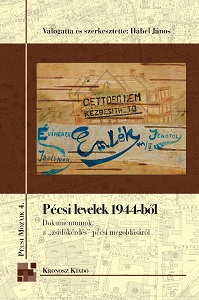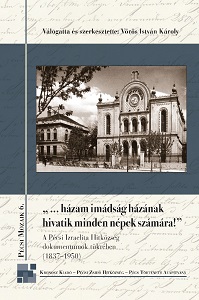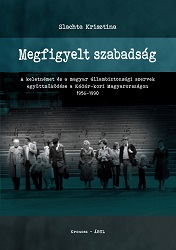
Observed Freedom. Cooperation between the State Security Services of Hungary and the German Democratic Republic between 1964 and 1990
Megfigyelt szabadság. A keletnémet és a magyar állambiztonsági szervek együttműködése a Kádár-kori Magyarországon 1956–1990
Keywords: Security Services; Eastern European state security cooperation; Stasi; Hungary; German Democratic Republic; 1956-1990
From the 13th August of 1961, the construction of the Berlin Wall completely erected the passage between the two divided parts of Germany. As a result of this factor, this date proved to be a rather important turning point in terms of the relations between the two parts of the country. Neither friends not families were able to meet from this time in the territory of the German states for several decades. A rather intensive quest started for a possible venue for meetings, which was accessible under the effective statutory regulations for the citizens of both German states. The relative geographical proximity and the appropriate services of the possible meeting points for the citizens of both parts of Germany (accommodation, board and lodging) was also of critical importance. In historical terms, it can be valued as a real coincidence, that Hungary turned to be the meeting venue for these Germans. As a result of this “accident”, the Hungarian economy started to develop, and the situation also had a positive impact on the Hungarian society gradually from the 1960s. Thus, the two parts of Germany were divided by the Berlin Wall, however German citizens were able to meet in the territory of the Hungarian state, which remained accessible for both East and West Germans.It is essential to emphasise that during this period of time, the tourism was controlled by the Hungarian state authorities. Nevertheless, this practice gradually changed from the 1950s. Back at that time, attempts were made at the most thorough check of every foreigner who came from “non-friendly countries”. This indicates us that everybody, who arrived from the territory of the “non-friendly countries” was believed to be “a spy for the Western imperialist powers, a saboteur, a counter-revolutionary and reactionary force”. This preconception started to became a little bit looser after a while and during the second half of the 1960s, tourism became a valued branch of the state economy. Opening to the Western countries proved to be the most essential factor at that time, as Hungary had to break from its several-decades long isolation. Harmful effects of the “cold-war propaganda” that had been employed against the country also had to been stopped. For this, tourists having been travelled to Hungary and having been left the country with positive experiences proved to be crucial. The control of foreigners arriving to Hungary in increasing numbers proved to be a considerable challenge for the Hungarian intelligence services as well as for the border guard units. This process culminated in 1961 – irrespectively from the beginning of the construction works of the Berlin Wall on the 13th of August – when specific actions had already been taken. Close cooperation among the state security services of the socialist countries was a fundamental and obvious duty for the services of the Eastern Bloc. Parallel with the division of labour between the Moscow-controlled state security, secret services and most importantly, intelligence agencies, the cooperation and the information exchange between certain socialist countries by time started to work on a stand-alone basis as well. Contact and mutual assistance could have been self-initiated, as well as organized according to the interests and needs of the particular countries. In case of the cooperation between the Hungarian and the East German state security services we may observe the following issues: besides the close co-operation in the fields of intelligence and counter-intelligence as well as the joint actions supervising the economic and cultural life and the exchange of information, the control of tourism was meant to be the main field of cooperation. This particular counted as the most noticeable for the citizens of the German Democratic Republic. After the construction of the Berlin Wall had become complete (from 1964), the Ministry for State Security started to operate the so-called operative groups (Operativgruppe, OPG) with the specific aim for controlling tourism around all those socialist states, whose neighbouring countries belonged to the group of the western capitalist states. German theoretical literature connected to this subject-matter, in which the presence of the Ministry for State Security is elaborated in case of the Lake Balaton or in terms of Bulgarian coastal area, the “lengthened Wall” since from the perspective of the East German state security Hungary, or any other country that was bordering a western country, simply owing to its geographical position constituted a great opportunity for crossing the borders illegally.It is important to emphasize that we are able to follow two kinds of tendencies in terms of the presence of the Ministry for State Security in Hungary: on the one hand, the mutual cooperation is clearly visible between the subunits of the two state security services, which was accomplished on the basis of specific agreements in the form of joint actions, exchange of information, technical assistance as well as study trips and exchanges of experience. These functioned very similarly to the general cooperational systems of the “brother organs”, i.e. the friendly state security services. The other thread is indicated in a special form of cooperation; the ever widening range of activities of the so-called operative groups which were only hinted at even in the framework agreements. History of the operative group can be interpreted within the framework of the cooperation between the two state security services; however in practice, the operations of the East German unit positioned in Hungary have gradually became more and more independent from the Hungarian Ministry of Interiors, as well as from the other MfS units taking part in the cooperation.Presence of the operative group, its operations, its independent observations and network-building activities neither could not function nor were able to be successful without the knowledge of the “friendly” host country’s “brother services” and their willingness to help. It is also essential that this was laid down in the agreements of the cooperation. Specific agreements between the two state security services were signed towards the end of the 1950s and at the beginning of the 1960s. The year of 1956 gave the first boost to the bilateral cooperation between the state security services. During the fight against the “contra-revolutionary forces”, Hungarian officers were backed by the Ministry for State Security, which was also stated in the first cooperational agreement in 1958. This affected their work profoundly and it played a major role in the second mutual agreement of 1963 as well, which was signed after the construction of the Berlin Wall. In that document, we find hardly any remarks about the joint fight against the new type of dangers due to the building of the “imperialist barrier”, the Berlin Wall.The basis of this certain agreement between the two state security services is the civil legal assistance agreement between the two states, which was signed on the 30th of October 1957. Later on, it had been cited by almost every contract which regulated the state security relations. In 1963, a separate agreement was issued concerning the tasks which would have been performed due to the legal assistance agreement and which also concerned primarily the departments for investigations. Hungarian authorities often conducted investigations in a number of cases when the citizens of the German Democratic Republic were arrested in Hungary. When the 30-day investigation period was finished, the arrested person along with the documentation, which was collected and also put in writing, was handed over to the assigned authority in the Democratic Republic of Germany. The majority of these incidents were related to the acts of crossing the state border illegally and either assisting or preparing such acts. Nevertheless, it also has to be mentioned that the extradition practice of the East German citizens arrested in Hungary did not comply with either the legal assistance agreements of the era or the international legal practice of the time. In reality, it rather meant the practice of handing over the authority to conduct the prosecution that is the handover of the jurisdiction.Operative groups in Czechoslovakia, Bulgaria and Hungary were formed as the cooperation between the HA (Hauptabteilung, Main Department) XX and HA II. in 1964. The presence and the operations connected to the operative groups were regulated by the orders and implementation orders of the Minister of State Security, namely Erich Mielke, and were helped by the constant cooperative negotiations as well as by the agreements with the Hungarian organs. About their operations work plans, registry and inventory books, annual summary reports, photos, observations, and the files of not unofficial collaborators (Inoffizielle Mitarbeiter) bear witness. Budapest, Prague and Sofia i.e. the capitals of the “friendly countries” became the headquarters of these groups. During the touristic high season, officers were relocated in touristic centers as well. Eg. in terms of the Lake Balaton, they were placed to Siófok, Balatonfüred, Keszthely or Hévíz.The operative group of the MfS indeed enjoyed the friendship of the “brother organs”: they got flats and tools for operative purposes, cars with local numberplates to move around without any restrictions as well as identity cards so that they would be able to enter the state security departments of the county police headquarters. Yet most essentially, apart from the material needs, naturally, Hungarian colleagues helped them obtaining certain pieces of information i.e. they let them know the exact time of arrival and departure of the West German tourists, who were suspicious because they could have had contacts with East German citizens in Hungary. Nevertheless, officers of the Stasi had more and more problems with the ever decreasing willingness of the Hungarian partners to provide information.The operation of this group functioning in Hungary follows a certain tendency as well. Primarily during its first ten-years-operation, the activity of the unit established in 1964 was presented seasonally and was characterized by an intensive connection with its Hungarian “brother organ”. The Ministry for State Security was supported in an active way by the Hungarian state security during this period. The state itself even proved to be the initiator in some cases. As a matter of fact, this was the period, when we may talk about real cooperation in terms of the observation of East and West German tourists in Hungary on both sides. During the first years of the functioning of the operative group, officers employed by the Ministry for State Security worked around unknown grounds and territories. Besides this, in the sense of the “lengthened Wall”, they performed unknown tasks in Hungary i.e. they deepended on the help from the Hungarian colleagues even in their practical work.During this period, they made attempts to get further information about German–German joint holidays as well as about the so-called planned escapes, or actions of groups dealing with human trafficking. Hungarian or East German organs had learnt about these actions mostly accidentally. This means that their operation was basically confined to reacting to events about which they had been informed by other authorities or private persons. From these joint observation work, head officers of the operative groups drew conclusions, which served as bases for their later, more and more complex and elaborated, also becoming more and more independent work from the Hungarian colleagues. which aimed at delivering a complete state security control.In 1972, operative groups were reorganized, and from that period of time, the three units positioned in those friendly countries, which were popular tourist destinations for GDR citizens, belonged to the newly-formulated HA VI. The Main Department was formed in order to maintain an intensive and complete control on the passenger traffic circulating between Hungary and the GDR, this way, the repositioning of the operative groups served as an improvement of the „lengthened Wall”. This Main Department, which was previously formed from independent organs, was responsible for checking borders, circulating people, their papers and pieces of luggage. It was also responsible for the control and by the operative means for the security of tourism aimed at friendly and not friendly countries. After the HA VI. had taken over coordinating the previous duties of the operative groups, apart from its own officers, one of the agents of the counter-intelligence, the HA II. was working with the groups.During the first half of the 1970s, the main task of the operative group, due to its growing professionalism, became the exploration of the „hostile political-ideological diversion”. More and more information was collected from simple – and probably innocent – conversations, connections between East and West Germans, while only a small percentage of the data referred to a planned illegal crossing of the borders. Behind the tendency regarding the alternation of the elaborated information, we are able to see the appearance of the idea according to which, the officers intended to carry on the full observation of those East German citizens, who travelled to a holiday. This may be interpreted as the idea connected to the expansion of so-called “lengthened Wall”, and the all-encompassing observation, which had already been realized within the borders of the German Democratic Republic.Officials were to sign the new cooperation agreement between the Hungarian and the East German state security in September 1974. Nevertheless, we do not find any explanations on the bases the archives why this agreement remained unsigned. The text of the planned agreement was much shorter than that of the agreement, which had been signed in 1963, and its first part only praised the results of the cooperation that far, and after that, simply repeated, almost word for word, tasks and cooperation possibilities and areas detailed in the previous two agreements. The international situation that was in effect from a state security point of view in 1974 must have been also in effect until 1981, when the agreement that they had suspended for seven years, was signed without any modifications. In the 9th paragraph of the agreement, there is an allusion to the operative officers over the other side, that is practically to the operative groups: “The two Parties – in accordance with the agreement between them – position a certain number of operative officers on the area of the other state in order to secure its citizens visiting that state, during which they can use intelligence methods and implement concrete measures. Both Parties are to give help and support to the officers of the other Party so that they would be able to achieve their goals.”As a result of the growing professionalism related to the operative groups, cooperation between the two state security services were modified. Firstly, senior officers of the Ministry for State Security positioned in Hungary needed the help of their Hungarian colleagues less and less. Secondly, during the 1970s, the operation of this particular unit became more independent from the Hungarian state security. This tendency lasted practically until the late 1980s. Nevertheless, this undisturbed cooperation burst at the end of that decade, because the Hungarian party had a different, well-meaning point of view related to the control of the tourism opposed to the East German intentions, who made attempts to tighten the control. The beginning of the 1980s can be characterized as the era of the easy cooperation. Whereas towards the mid-1980s, mainly due to the alternations in the international relations and the national political affairs of the two countries, the conditions of the cooperation started to change.The operative group even built and operated an independent network in Hungary. The work of the group operating with an increased number of unofficial collaborators during the summer months at Lake Balaton was helped, on the one hand, by young Stasi officers, who spent their vacation there, by FDJ-members and by informers enlisted as IM and working for other MfS Main Departments during the non-summer months, too, who arrived to Hungary for a holiday. Yet, this seasonal „summer-network” (apart from the permanent, professional IMs) had to work with a constantly changing staff (practically in every some weeks), which made effective work difficult. By the time the IM had got around the scenes and had got to know his contact officer, the target person was found. Besides this, the first reports had been arrived as well as analysed and they were about to return to the GDR.The permanent IM-network, which was formed by the second half of the 1980s and made up by East German citizens living or working in Hungary for several years, was a lot more important and effective for the operative group. Among them, we can find exchange students, immigrant workers, a dentist, who got married and settled in the countryside, or an engineer working in Budapest as a language teacher. Besides this, we have information about the East German waiters of the so-called Raabe Diele restaurant which is very important. Based on the summer working plans, the annual report, the postal registry of the operative group and also based on a file that summarizes the IM personnel from the VI Main Department it was possible to isolate the members of those two separate networks that carried their operations. On the one hand, members of the network, who were positioned to Lake Balaton only during summer months, on the other hand, members of the other network, who carried out their non-official tasks under the control of operative officers from Budapest. During the late 1980s, we are able to isolate a network of about 18–20 IMs around Lake Balaton in the summer months, and besides that – in 1989 – a network of 17 IMs from East German citizens living permanently in Budapest or in the countryside and working as unofficial collaborators during the whole year.According to the workfiles, the task of the network, which operated during the whole year, was rather to report about the changes in Hungary and about the climate connected to the public opinion than to observe the East German citizens who were spending their vacation here. Those, who were stationed in Hungary for a long time, reported more often about their colleagues – often also as parts of the organization –, about their western connections. Reports connected to their fellow citizens, who visited their institutions, were less frequent. Nevertheless, being aware of the information, which is presented in the archive documents about the cooperation between the East German and the Hungarian state security services, we are able to claim that the Hungarian state security did not know about the operation, about the size or the measure of this permanent agent network.Within the cooperation of the state securities related to the two countries, control of tourism played an important part. Furthermore, the mutual exchange of information about the guest workers and the exchange students in both countries was a vital issue, as well as the exploration and control of the growing informal cultural and scientific connections. This direction of cooperation also expanded in the 1980s, but those were more likely to be independent investigations, rather than a joint observation and information gathering operation.In the course of 1989, Stasi and the entire leadership of the German Democratic Republic was primarily concerned about the newly-evolved situation, the news of pulling down the Iron Curtain, the physical obstacle built along the Austrian–Hungarian border section, and Hungary’s joining the Geneva Refugee Convention. Despite of the fact that in 1989, Hungarian state security organisation was no longer in the centre of interest, and practically did not have the capacity to deal with East German cases, people kept on coming in higher numbers, but in the midst of the increasing number of international events, neither the press, nor the public or the political participants paid much attention to them before their presence forced the borders open. The events that took place in August and in September of 1989, and responses of the high officials of the East German Ministry for State Security foreshadowed the events that took place in the autumn in the German Democratic Republic. Due to its structure and operating principles, East German state security organisation, which was operated in a military manner, gradually grew gigantic and consequently slowed down, having been become unable to follow the accelerating events. Even though information was available for them about the new developments in the making, they could not respond fast enough and prevent the events by targeted action. Reports and correspondences about the Picnic and about the border opening foreshadowed the condition characteristic of the Stasi, which then paralysed the “company” also during the demonstrations and opposition movement. Due to the size of this military and bureaucratic hierarchy, which had grown gigantic, the information flow had slowed down. By the time a piece of information was received from Hungary or from one of the provincial towns of the German Democratic Republic, and it became then assessed, summarised and forwarded to higher levels, organisational counter-productivity had gained a victory: by the time an effective decision was made, the events undermining the very existence of the GDR had already happened.The last traces proving the presence of the East German state security in Hungary also served as additional information and help us to retrace the history of the Hungarian state security and its transformation. No order or command could have been retained even among the documents of the BStU about the abolishment or the recall of the operative groups specifically. The last record about the activity of that particular unit was written on the 9th of November 1989 which refers to one of the operative group’s officers (presumably last) stay in Budapest between the 21st and 23rd of November 1989. In the mirror of the Hungarian changes, it is rather surprising that between the 27th of November and 1st of December 1989, two delegations from the transforming Stasi, by this time named AfNS, were received at the Ministry of Interior, and the last correspondence between the two organs was dated 9th of January 1990, just six days before the civil occupation of the centre for the East German state security in East Berlin.From the countries belonging to the Soviet Bloc, the KGB definitely had the most relocated operative officers in the countries within their sphere of interest. Yet, in my opinion, their activity cannot be regarded as a cooperation, since even their “partners” probably did not have much information about their operations, and the ‘researchability’ of this subject-matter is still seriously limited. From the state security services under the shielding of the KGB, it was probably the Stasi that developed the most elaborate state security cooperation network at that time, but in order to gain an accurate picture, it is important to distinguish a real, active, bilateral cooperation based on two equal partners from the presence of a state security service that delivered orders and commands – like the KGB – which cannot be considered as a cooperation in its real sense.I am convinced that it is an extremely important question how much the cooperation of the state security organs of the Eastern Bloc were controlled by the KGB, if they gave the orders, or to what extent the cooperation was agreed on or shielded by the KGB or how much they can be regarded as individual initiatives and real bilateral cooperation. As for the intensive period of the cooperation between the Stasi and the Hungarian State Security from 1961 to 1989, I did not find any documents or references – in those two archives that have preserved the documentation – that could have served as an evidence to the idea that those cooperations were initiated, controlled, commanded or even encouraged by the KGB. Due to this factor, I think that we can state that the idea of forming and operating these operative groups having been worked within the system of the “Lengthened Wall” for two and a half decades, was an idea coming especially from East Berlin. Since the main task of these units was to control their own citizens as tourists from their own country and to prevent them from leaving their home country even via a detour, these three operative units were separated even in the routine of the MfS from other units with an intelligence type of tasks, which are well-known from the documents of the Hungarian State Security as intelligence residency.Operative groups of the East German State security were able to work more and more independently in the countries of the Eastern Bloc – except for Romania and Yugoslavia. Nevertheless, from the Hungarian point of view, we may talk about an active and a real cooperation at all times, although this cooperation shifted gradually to the Stasi’s side. From the point of view of the Hungarian State Security divisions, the East-German connection must have been the most intensive state security cooperation, regardless of the fact that this cooperation became asymmetrical. This cooperation shows a distorted measure both in quality and quantity. During the period in question, there were more and more requests for information from the Stasi’s side that were delivered for the Hungarian state security. Parallel with these events, the whole spectrum of the cooperation shows a growing disproportion. Meanwhile the activity of the East German State Security in Hungary became more and more intense, active and professional. However, judging the weight of each and every cooperation of the Hungarian state security with partner services could be possible only if the systematic historical research of all the bilateral state security agreements could be done in the near future.On the basis of the history of the cooperation between the Hungarian and the East German State Security services, I believe that we can question the idea according to which cooperation between the state security organs inside the Bloc, even during the period that started in the mid-1960s, a rule which said that every connection, every activity and every operation could only happen once it was ordered by Moscow and was assisted by the KGB in an active way. Although, the cooperation between the Hungarian and the East German with each other only constitutes a small portion of their systems of cooperation, I think that the research of that small proportion still raises the possibility of the reinterpretation and revaluation of the results that we have about the whole Eastern European state security cooperation network.
More...
